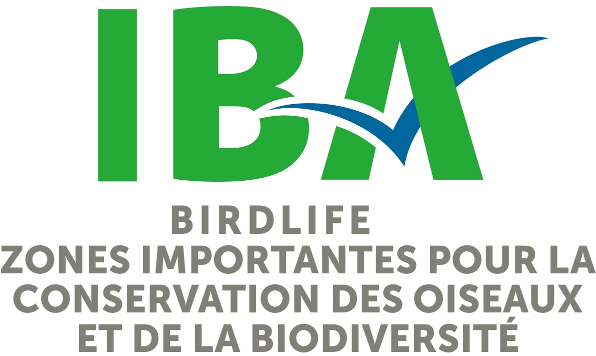Baie et cordon littoral de Tracadie (NB014)
Tracadie, Nouveau-Brunswick
Description du site
Le site est situé sur la côte nord-est du Nouveau-Brunswick et est caractérisé par son cordon littoral pourvu de dunes et de plages qui s'étire sur une distance de 8 km. Le cordon littoral protège la baie de Tracadie qui possède une superficie de 20 km2 et est alimentée par la Petite rivière Tracadie. La localité de Tracadie se trouve à l'embouchure de cette rivière et se situe à 4 km à l'ouest de la portion sud du cordon littoral. On retrouve la ZICO de la pointe à Bouleau au sud de cette localité. Les ZICO de la pointe à Bouleau et de Green Point, située au nord de Tracadie, ont été traitées séparément en raison des différences concernant l'utilisation du territoire qui en est faite.
Oiseaux
La baie de Tracadie et le cordon littoral adjacent accueillent un nombre significatif de Pluviers siffleurs, une espèce vulnérable au niveau mondial et en danger de disparition au niveau national. Au cours de l'Inventaire mondial des Pluviers siffleurs de 1996, on y a recensé 12 individus, ce qui représente près de 2,8 % de la population de l'Atlantique canadien pour cette espèce. Au cours des 11 dernières années (de 1987 à 1997), il a été calculé qu'en moyenne 14,3 adultes étaient présents à ce site.
Le site est également utilisé comme aire de repos par la sauvagine et les limicoles durant la période migratoire. À l'automne, des centaines de Bernaches du Canada et des milliers de limicoles, tels que le Bécasseau semipalmé et le Pluvier semipalmé, y sont ainsi notés. Des observateurs ont rapporté plus de 200 Tournepierres à collier et 300 Bécasseaux à croupion blanc durant cette saison.
La baie de Tracadie est également fréquentée par un petit nombre de Bernaches cravants (moins de 100 individus). Par le passé, cette espèce présentait des groupes beaucoup plus importants comme le démontrent les 20 000 individus qui étaient rapportés à l'automne et au printemps durant les années 20. Toutefois, à partir des années 30, il a été noté que cette espèce avait commencé à emprunter une autre route migratoire, ce qui leur permettait de relier plus directement la baie James et l'État du New Jersey. On pense que ce changement aurait été apporté par la diminution de la source de nourriture utilisée par l'espèce. À partir des années 40, presque plus aucun individu ne passait par les Maritimes au cours de la migration automnale.
En plus des espèces citées plus haut, le site héberge quelques Balbuzards pêcheurs qui peuvent être observés pêchant dans la baie.
Enjeux de conservation
Le Projet siffleur (Piper Project) est un programme qui a été mis sur pied par la Fédération des naturalistes du Nouveau-Brunswick en vue de protéger les écosystèmes côtiers, et plus particulièrement l'habitat utilisé par le Pluvier siffleur, et de sensibiliser les gens à ce sujet. Avec l'aide du Service canadien de la faune, la fédération a pu effectuer des recensements annuels des Pluviers siffleurs à ce site. Ces inventaires ont permis d'identifier le cordon littoral comme étant un endroit possédant une importance significative pour le Pluvier siffleur, un endroit qui a par la suite été inscrit dans l'Atlas des plages utilisées par le Pluvier siffleur au Nouveau-Brunswick. Les sites-clés sont «des sites qui doivent être protégés dans le but d'assurer la survie et le rétablissement des Pluviers siffleurs au Nouveau-Brunswick».
Les plages de Tracadie sont populaires auprès des vacanciers durant l'été. Les Pluviers siffleurs sont sensibles à ce type de dérangement; certains oiseaux allant même jusqu'à abandonner leur nid, réduisant du même coup le taux de productivité de cette espèce.
Un autre sujet d'inquiétude concerne le nombre de plus en plus important d'occupants illégaux (ou squatters) qui construisent des chalets au milieu des dunes et qui fréquentent ce secteur durant l'été. Ces personnes causent différents dommages aux Pluviers siffleurs. Dans plusieurs cas, les déchets sont laissés sur place, ce qui a le potentiel d'attirer les prédateurs, tels que les renards et les goélands, deux espèces qui aiment bien incorporer oeufs et oisillons dans leur alimentation. La présence d'un nombre de plus en plus important de personnes sur les dunes dérangent les oiseaux, ce qui se traduit par l'abandon des nids.
Catégories ZICO Habitats Usages Menaces Potencielles ou Existantes Status de Protection

